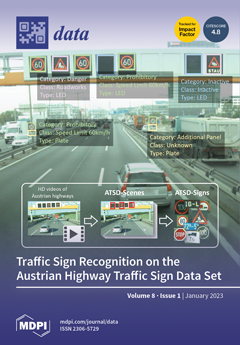Open AccessData Descriptor
Spectral Library of Maize Leaves under Nitrogen Deficiency Stress
by
Maria C. Torres-Madronero, Manuel Goez, Manuel A. Guzman, Tatiana Rondon, Pablo Carmona, Camilo Acevedo-Correa, Santiago Gomez-Ortega, Mariana Durango-Flórez, Smith V. López, July Galeano and Maria Casamitjana
Cited by 1 | Viewed by 2138
Abstract
Maize crops occupy an important place in world food security. However, different conditions, such as abiotic stress factors, can affect the productivity of these crops, requiring technologies that facilitate their monitoring. One such technology is spectroscopy, which measures the energy reflected and emitted
[...] Read more.
Maize crops occupy an important place in world food security. However, different conditions, such as abiotic stress factors, can affect the productivity of these crops, requiring technologies that facilitate their monitoring. One such technology is spectroscopy, which measures the energy reflected and emitted by a surface along the electromagnetic spectrum. Spectral data can help to identify abiotic factors in plants, since the spectral signature of vegetation has discriminating features associated with the plant’s health condition. This paper introduces a spectral library captured on maize crops under different nitrogen-deficiency stress levels. The datasets will be of potential interest to researchers, ecologists, and agronomists seeking to understand the spectral features of maize under nitrogen-deficiency stress. The library includes three datasets captured at different growth stages of 10 tropical maize genotypes. The spectral signatures collected were in the visible to near-infrared range (450–950 nm). The data were pre-processed to reduce noise and anomalous signatures. This study presents a spectral library of the effects of nitrogen deficiency on ten maize genotypes, highlighting that some genotypes show tolerance to this type of stress at different phenological stages. Most of the evaluated genotypes showed discriminate spectral features 4–6 weeks after sowing. Higher reflectance was obtained at approximately 550 nm for the lowest nitrogen fertilization treatments. Finally, we describe some potential applications of the spectral library of maize leaves under nitrogen-deficiency stress.
Full article
►▼
Show Figures





